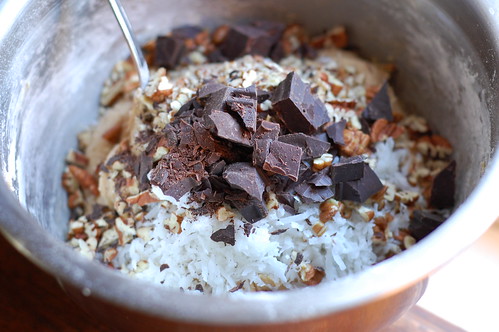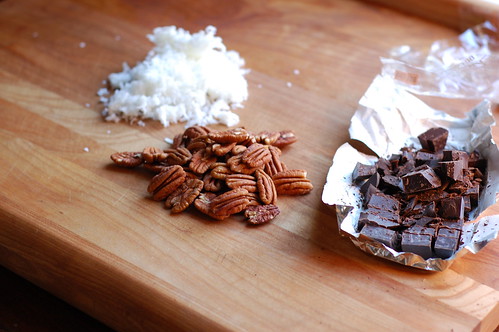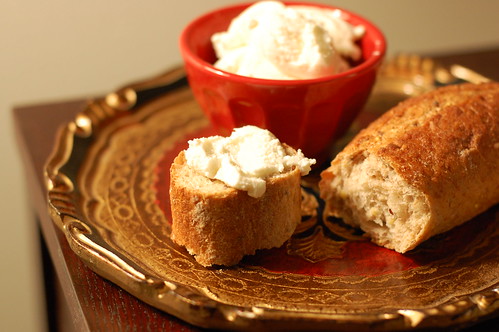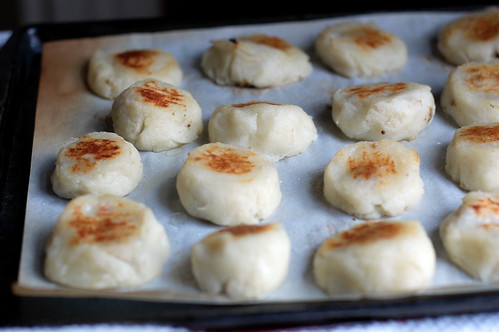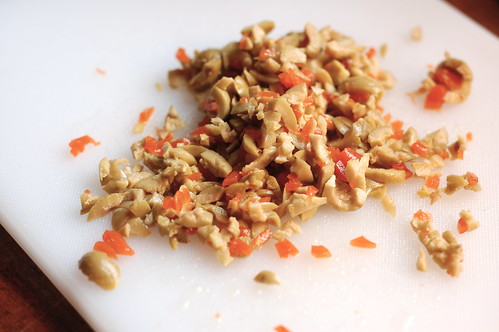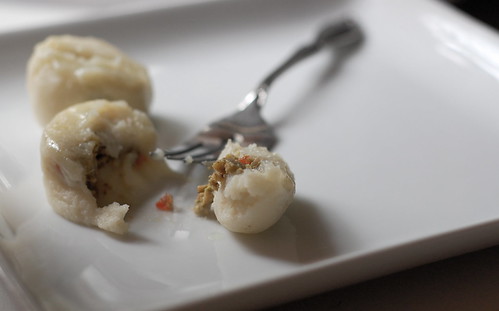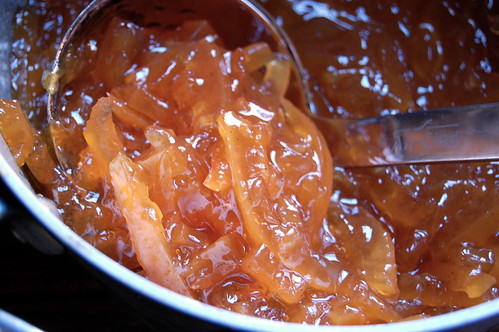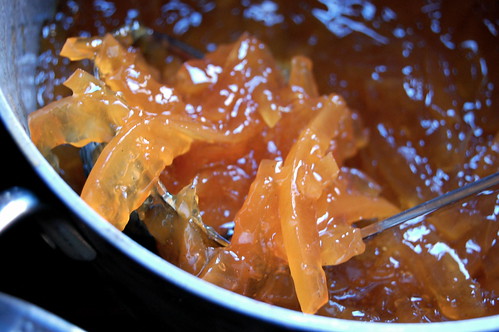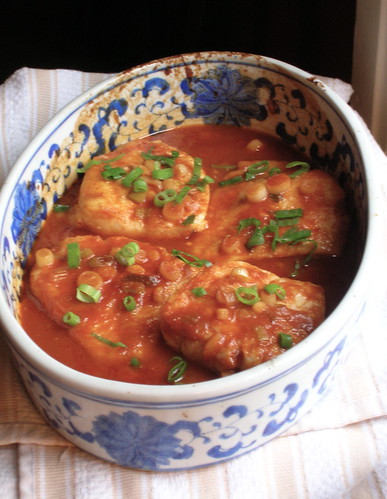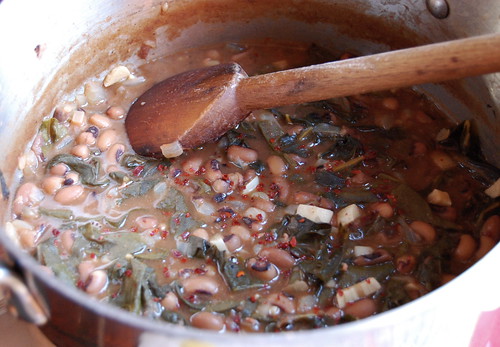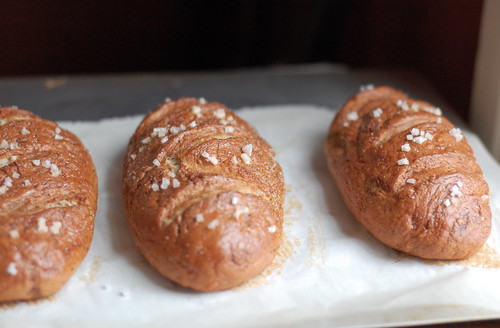 Because the Corner Bakery is conveniently located in the train station where I commute, I occasionally I stop by this local chain to pick up some bread to go with my lunch or dinner. I am particularly fond of their pretzel baguette, basically a soft pretzel in baguette form, in fact I rarely let myself buy them as they are so addictive. They are gorgeous too, smooth, shiny, with characteristic white slash marks across the top. I always thought the pretzel baguette was a quaint quirk made up by a creative baker, but it turns out it really is a real German food, known as laugenstangen.
Because the Corner Bakery is conveniently located in the train station where I commute, I occasionally I stop by this local chain to pick up some bread to go with my lunch or dinner. I am particularly fond of their pretzel baguette, basically a soft pretzel in baguette form, in fact I rarely let myself buy them as they are so addictive. They are gorgeous too, smooth, shiny, with characteristic white slash marks across the top. I always thought the pretzel baguette was a quaint quirk made up by a creative baker, but it turns out it really is a real German food, known as laugenstangen.It also occurred to me that I could make my own pretzel baguettes, thereby creating perfect homemade cradles for sausage and onion sandwiches or merely for slathering with mustard. I found a recipe for pretzel rolls and set to work. Did you know that pretzels get their characteristic shiny exterior from boiling before baking (much like bagels), only that pretzels are boiled in a baking soda bath? I didn’t, but it was fun to boil them in the foamy water and then watch their exteriors turn dark golden and shiny in the oven. Though this is a yeast bread, it has a fairly short rising time, which makes them fast and easy to make.
And the results? While my baguettes weren’t as smooth and shiny as the commercially made ones, the taste was just as delicious, with salt-crusted punctuations and soft interiors. I know they seem destined for meat-filled sandwiches or sauerkraut, but we were perfectly happy dipping them in a bowl of soup. I bet they’d make perfect snacks with a glass of good beer, too.

Pretzel Baguettes
These are really just an excuse to eat a soft pretzel with your lunch or dinner, although they are a good one at that. Keep in mind they can be a bit unwieldy to boil, so it’s best to make them mini-baguette size. A few finely crushed caraway seeds are a nice addition to the dough if you feel like it. Makes 4 mini-baguettes.
2 3/4 cups bread flour
2 1/4 teaspoons rapid-rise yeast or SAF instant yeast
1/4 teaspoon salt
1 teaspoon sugar
1 cup hot water
for boiling and baking:
1/4 cup baking soda
2 tablespoons sugar
2 tablespoons coarse sea salt
1 egg white, beaten to blend
1. Place the yeast and sugar in a large bowl. Add the hot water and let sit a few minutes until bubbly. Gradually add the flour with the salt, stirring to form a dough. Knead the dough a minute just so that it is smooth and combined (I knead it in the bowl, but you could knead it on a board if you prefer). Rinse the bowl out and grease it. Place dough in bowl, turn to coat, and cover with plastic wrap. Place in a warm, draft-free place to rise until doubled in volume, about 35 minutes.
2. Lightly flour a work surface. Knock the dough down and divide it into four pieces. Shape each piece into a mini-baguette and cut deep slashes in the top with a sharp knife or razor blade. Cover loosely with a towel and let rise for 20 minutes.
3. Meanwhile, preheat the oven to 375 F. Line a baking sheet with parchment paper. Bring 8 cups of water to boil in a large deep pot. Add the baking soda and sugar to the boiling water (caution it will bubble up!!). Lower the heat slightly so the water is simmering but not boiling violently. Add the mini-baguettes one or two at a time and boil about 30 seconds on each side. Carefully use a slotted spoon to remove them.
4. Arrange boiled mini-baguettes on the baking sheet. Brush with the egg white glaze and sprinkle with salt. Bake until golden brown, about 30 minutes.
5. Best stored at room temperature loosely covered with a towel. Do not place in a plastic bag or they will become soggy.

